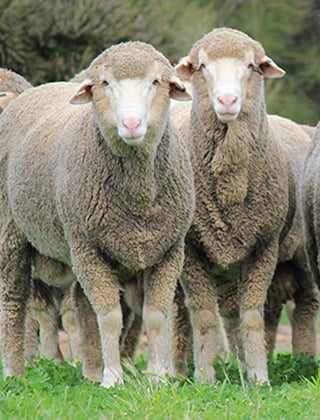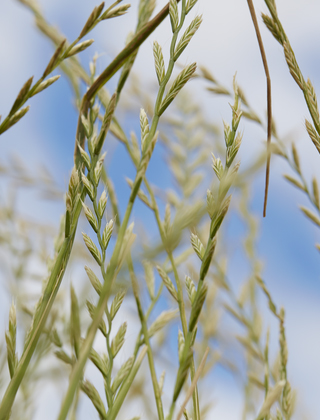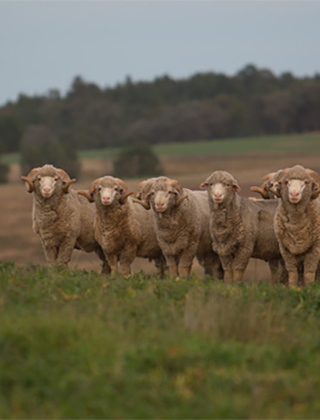MLP insights: improving reproduction rates
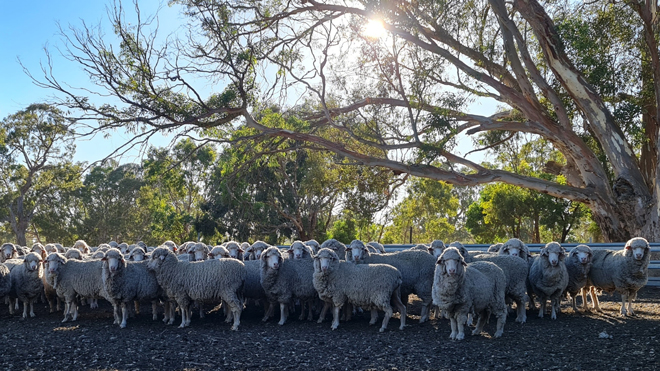
Analysis of the extensive set of sheep assessment data gathered during the operation of the MLP project continues. Part of the analysis has examined how estimates of genetic performance for reproduction (Weaning Rate) changes over time. Read on for a summary of the results.
Enhanced productivity and profitability in Merino flocks is often achieved through increased weaning rates. Addressing higher reproduction rates through genetic improvements has been challenging for the Merino industry due to the trait’s low heritability and the complexity of recording it.
The Merino Lifetime Productivity (MLP) project has played an important role in generating a large volume of reproduction data that has led to robust estimates of genetic performance for a wide range of Merino sires.
Additionally, the project has facilitated important research to inform future breeding strategies to improve reproduction.
At the MerinoLink annual conference held in June, Postdoctoral Research Fellow Dr Peter Wahinya of UNE’s Animal Genetics and Breeding Unit (AGBU) presented research work from the MLP project that explored how well early-life performance has predicted lifetime performance and how genetic estimates changed over time.
He also explored the role of genomics in enhancing early in life reproduction genetic estimates.
Genomics is the study of an animal’s DNA, which helps us estimate how an animal is genetically predisposed for important traits like wool production, growth, disease resistance, and reproduction.
In the MLP project, DNA was collected from all ewes through small tissue samples and sent to a laboratory for analysis. The results from the DNA profiling are then combined by MERINOSELECT with the ewes’ recorded data to create genomically enhanced Australian Sheep Breeding Values (ASBVs).
Reproduction breeding values are estimated from evaluating female progeny of sires for conception, litter size and their ability to raise a lamb which is combined into the trait known as Weaning Rate (WR).
To achieve an accurate estimate of a sire’s breeding value for WR requires a sufficiently large number of daughters with reproduction records, ideally collected over repeat reproduction events.
Weaning Rate - Flock Breeding Value correlations over time
At the MerinoLink conference, Peter shared an example of work from the MLP project’s MerinoLink site, where thirteen sires were progeny tested in each drop, with 29 and 34 ewe progeny per sire for the 2016 and 2017 drops respectively. The sires’ WR breeding values were calculated using their daughters records without the benefits of genomic information.
Figure 1: MerinoLink Weaning Rate FBVs change over time

Figure 1 shows correlation plots between lifetime WR Flock Breeding Values (FBV) and FBVs estimated using cumulative reproduction data at each stage of assessment. In the charts, ‘Data up to A2’ denotes FBVs based on the first joining. ‘Data up to A3’ uses the first and second joining, ‘Data up to A4’ uses data from the first to third joinings and ‘Data up to A5’ uses data from the first to the fourth joinings. We refer to the ‘Data up to A5’ FBV results as the lifetime data in this article.
One reproduction event record produced a correlation of 0.72 with lifetime performance, while two records increased this to 0.85. Maiden ewe (first-time lambing ewe) performance often differs from that of older ewes due to physical and behavioural immaturity.
Peter has extended this work to explore how breeding values change across all the MLP sites and has shown that the relationship between lifetime WR and each stage of reproduction assessment ranged from 0.61 to 0.96 for FBVs, and 0.89 to 0.99 for ASBVs, with the lowest correlations observed in breeding values estimated from reproduction data of maiden ewes.
Weaning Rate - Flock Breeding Value accuracy
Peter has also undertaken a simulation study that used data from the MLP project to estimate how accurate the WR FBVs are when different numbers of ewe progeny are evaluated and with varying numbers of repeat joinings. He then compared these results to the accuracy of ASBVs for the same scenario and assumed that all sires and ewe progeny had been genomically tested.
Breeding value accuracies range from 0% to 100%, indicating how closely the estimated breeding value aligns with the true breeding value. An accuracy of 100% means the estimated breeding value perfectly matches the true value. If the accuracy is below 100%, there is a likelihood that the estimated breeding value may change.
The simulation study indicated a significant improvement in the accuracy of WR FBV estimates as the number of ewe progeny assessed per sire increased, particularly when repeat joinings were available (refer to the charts in Figure 2). The most significant impact of repeat joinings is observed when fewer ewe progeny are evaluated per sire. When compared to ASBVs for reproduction, which include genomic data, it was found that high accuracy can be achieved with a smaller number of ewe progeny evaluations and fewer reproduction events.
Figure 2: Benefits of genomics in estimating Weaning Rate, MLP simulation study

Wrap up
The key takeaway from Peter’s work is that the accuracy of WR breeding values improves with the number of a sire’s progeny evaluated. Genotyping is expected to lead to substantial accuracy gains for reproduction traits and recording multiple mating events will likely further enhance accuracy and reduce bias.
The MLP project has significantly contributed to the Merino reproduction genomics reference population by providing lifetime reproduction data for more than 4,800 ewes (resulting in more than 20,000 weaning rate records). This contribution has enabled the industry to access more accurate reproduction estimates through genomic testing.
With the MLP dataset now complete, Peter is analysing correlations between all measured and visual traits across different age stages. He is also estimating the heritability of these traits and assessing the impact of factors like birth type, rear type, reproduction, and lactation on performance.
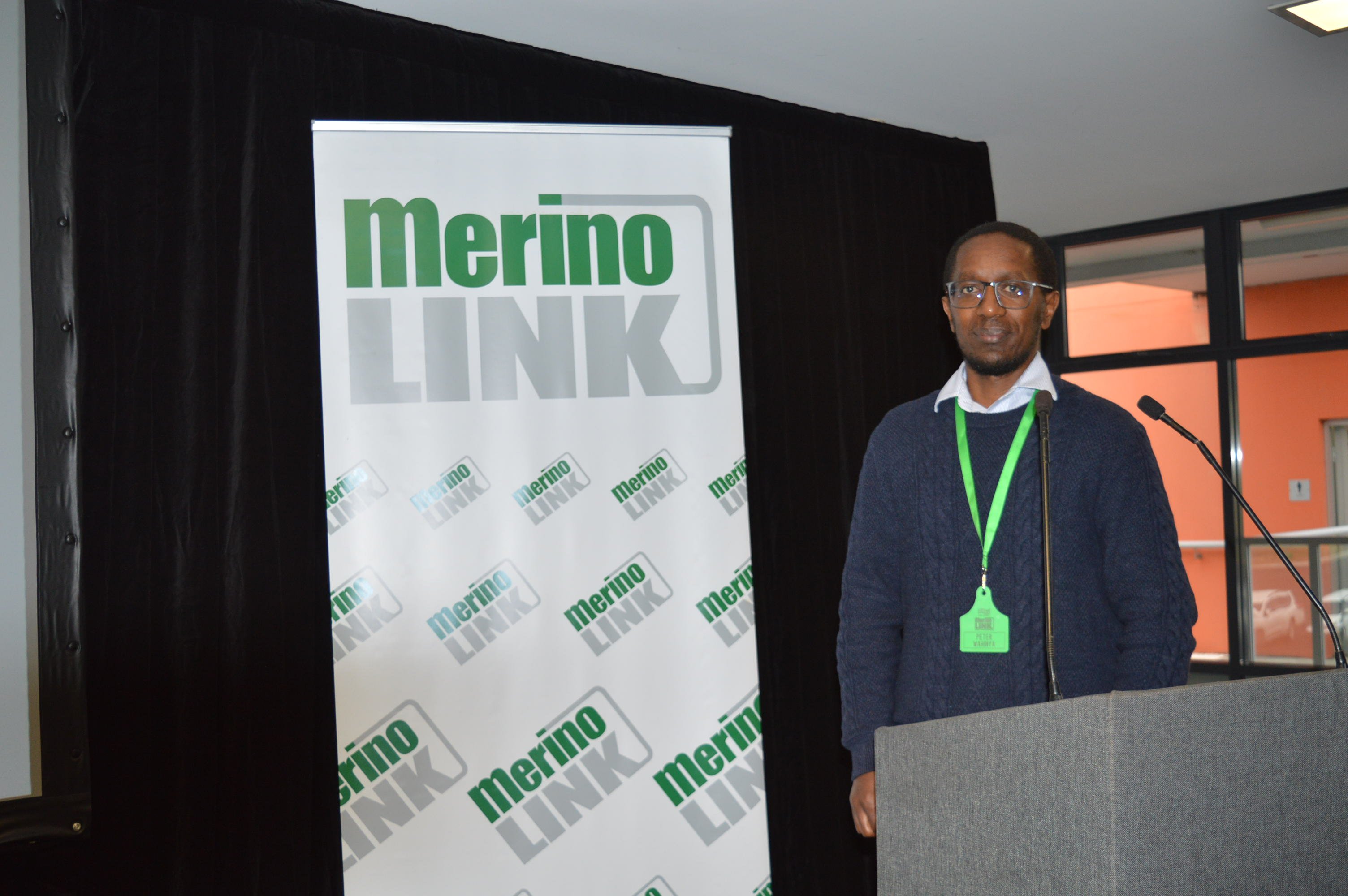
Dr Peter Wahinya at the 2024 MerinoLink Conference.

SAVE THE DATE
Catch the next industry MLP project update at the Balmoral Sire Evaluation field day on 7 March 2025.
Or jump the ditch and head to the AAAGB conference which will run from 24 to 27 June in Queenstown, New Zealand.
MLP quick facts
The AWI-funded MLP project is a $13 million ($8 million from AWI plus $5 million from project partners), 10-year venture between AWI, the Australian Merino Sire Evaluation Association (AMSEA), nominating stud Merino breeders and site partners.
- Balmoral, Vic WA
Partner: Tuloona Pastoral
Committee: Balmoral Breeders Association - Pingelly, WA
Partner: Murdoch University / UWA
Committee: Federation of Performance Sheep Breeders (WA Branch) - MerinoLink, Temora NSW
Partner: Moses & Son
Committee: MerinoLink Limited - Macquarie, Trangie NSW
Partner: NSW DPI
Committee: Macquarie Sire Evaluation Association - New England, NSW
Partner: CSIRO
Committee: New England Merino Sire Evaluation Association
The MLP project has tracked the lifetime performance of 5,700 ewes as they proceeded through four to five joinings and annual shearings.
A full suite of assessments has been taken on the ewes including visual trait scoring, classer gradings, objective assessments of a range of key traits and index evaluations along with a DNA genotype at the start and end the of their lives.
A unique and extensive dataset has been created that is being used to enhance existing Merino breeding and selection strategies, for both ram sellers and buyers, to deliver greater lifetime productivity and woolgrower returns now and into the future.
To stay up to date with the latest MLP findings, visit www.wool.com/MLP. Subscribe to MLP updates via www.merinosuperiorsires.com.au/contact-us
This article appeared in the December 2024 edition of AWI’s Beyond the Bale magazine. Reproduction of the article is encouraged.






